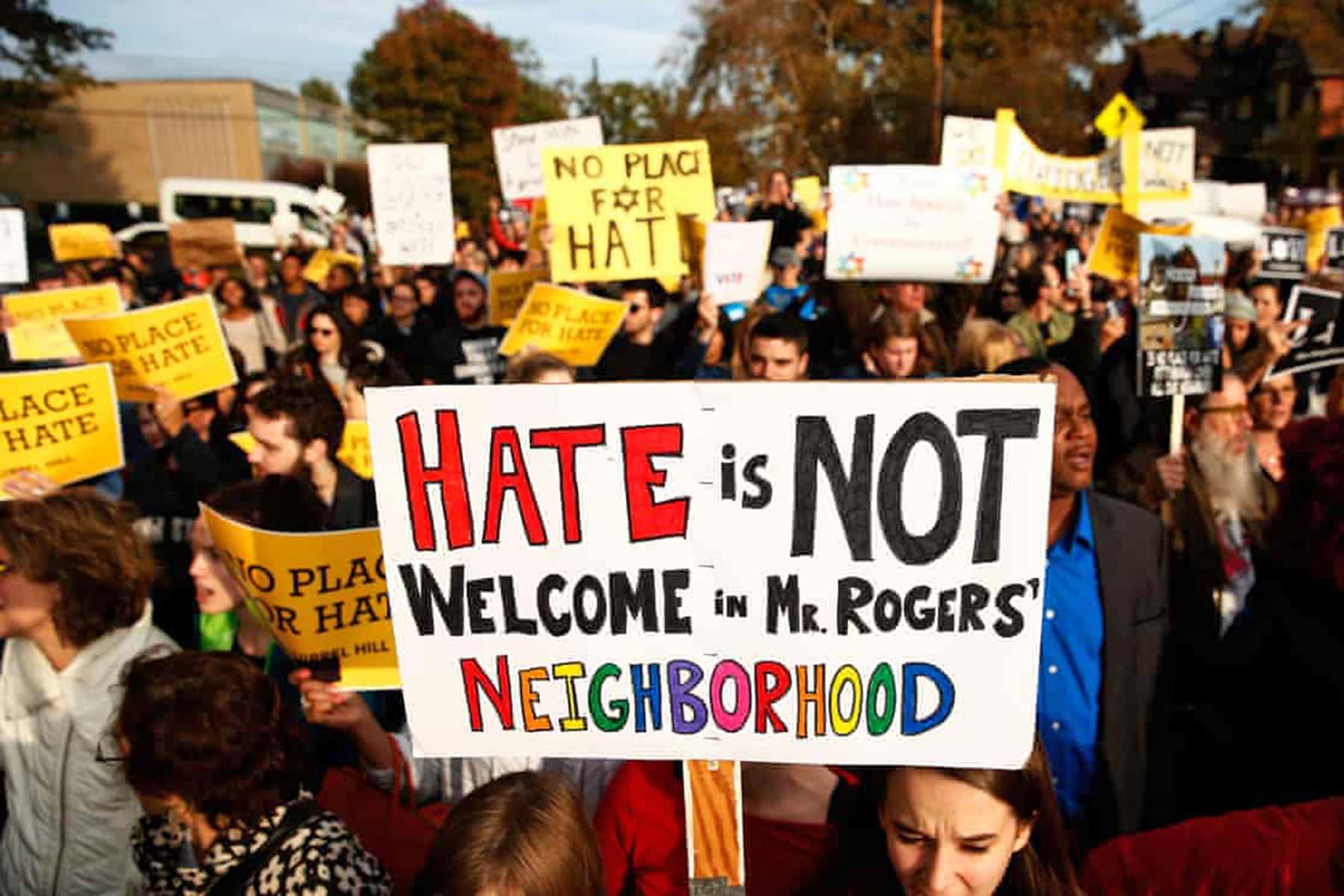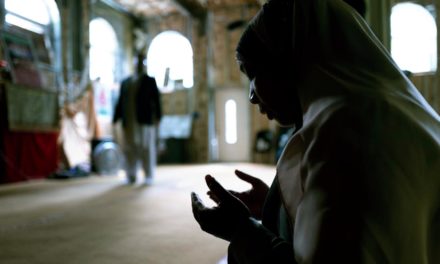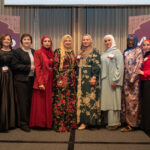
Do the names Elijah Coverdale, Kathy Finley or Tywanza Sanders sound familiar? Probably not. And yet you are almost certain to know the names of the men who killed them. Elijah Coverdale and Kathy Finley were two of the 168 people killed in the Oklahoma City bombing of 1995, still the most deadly case of domestic terrorism in US history, whereas Tywanza Sanders was among 9 people killed in the church shooting in Charleston, South Carolina, in 2015. As so often happens in the case of crimes, particularly those committed by the far right, the perpetrators are humanized in multiple news stories that follow the attack, while the victims are reduced to cold and impersonal statistics.
Recently the FBI released its latest hate crimes statistics, showing a nearly 23% increase in religion-based hate crimes and a 37% spike in anti-Jewish hate crimes in 2017. Almost 60% of victims were targeted because of their (perceived) ethnic or racial identity, some 20% because of their (perceived) religion, almost 16% because of the (perceived) sexuality, and 2% because of their disability or gender. In part because of their definition, hate crimes have a predominantly (far) rightwing motivation. However, even in the more neutrally defined case of political violence and terrorism, far-right ideology is the dominant motivation, and far-right terrorism is on the rise.
There is a lot wrong with hate crime statistics, particularly in the US, where no national dataset exists, and even the FBI statistics are based on voluntary reporting by local law enforcements agencies, which, in any case, come with all kind of biases. Hence, as is the case with data on sexual violence, among others, hate crime statistics scratch only the surface of the real problem. For example, the National Crime Victimization survey suggested as many as 250,000 annual hate crimes in the period from 2005 to 2015.
Many victims will not report hate crimes for fear of being exposed (ie, homosexuality and undocumented immigrants) or for lack of trust in law enforcement or the criminal justice system (ie, African Americans and Muslims). And even if victims do report hate crimes, many law enforcement agencies will not classify them as such. For example, almost one in five law enforcement agencies did not submit one single hate crime report from 2009 to 2014.
According to the FBI, there were 8,493 victims of hate crimes in the US in 2017. Almost half were victims of intimidation, one-third of “simple assault”, and one-fifth of aggravated assault. Most of these people are nothing more than a statistic for both law enforcement and the media. Perhaps their name, age and ethnicity were noted in the story about the hate crime, if it was even reported , but their experience, during and after the crime, were ignored.
Instead, we read about the mitigating factors of the perpetrator, how he was “just an average guy,” or “a good neighbor,” perhaps withdrawn and with a history of mental health issues – if they were white. The victim is often not just dehumanized by the perpetrator but also by the journalists, reduced to her or his demographics: black, disabled, gay, Jewish, Muslim, or trans.
In a new book, American Hate: Survivors Speak Out, community activist and civil rights lawyer Arjun Singh Sethi gives voice to the victims of hate crimes. It is a collection of “testimonials from people impacted by hate before and after the 2016 presidential election.”
Letting the people tell their experiences in their own words, American Hate gives a face (or better: many faces) to the enduring problem of bigotry and hate crime in this country, highlighting in particular the negative effects of having a “Bigot in Chief” in the White House. Through the stories, it shows the damage done to individuals and communities not just by arson, assault and murder, but also by the less acknowledged cases of everyday bigotry, including bullying, trolling, exclusion, banishment, deprivation, discrimination, stigma, vandalism, and police brutality.
We hear from Taylor Dumpson, the first black women to become student government president at American University, who, reflecting on the horrible racist abuse and intimidation she faced in response to her election, states, “the less we talk about race … the more we fear and hate.”
Or from Alexandra Brodsky, a sexual assault survivor who faces antisemitism and sexism as she continues to speak out, including about the spike in sexual harassment of girls on school playgrounds by boys who claim that if the president can do it, so can they. Similarly, Harjit Kaur, a Sikh activist and civil rights lawyer whose teen nephew Akal was bullied in school, notes: “Yet today feels worse than 9/11 because our leaders are contributing so openly to this spike in hate.” The general mood is captured well by Marwan Kreidie, spokesperson for the Al-Aqsa Islamic Society in Philadelphia: “Most people, including myself, believe we should prepare for the worst and hope for the best.”
But what makes this book so powerful, is that it goes beyond the paradigm of (passive and weak) victim, and highlights that they are also (active and strong) survivors. Tanya Gersh, a Jewish citizen of Whitefish, Montana, who is the target of a vicious anti-Semitic campaign by neo-Nazis from around the country, expresses this most powerfully: “Being a victim is painful. But surviving and fighting back has brought me a sense of peace and justice. As long as I’m alive, I want to fight and make sure nobody else endures this again.”
Hate crimes are as American as apple pie. As Sethi notes in his introduction to American Hate: the US was built on a hate crime, and has a long history of hate crimes, but “the hate nowadays is more visceral and widespread” than in the past decades. As Trump emboldens, empowers, enables, facilitates and legitimizes the perpetrators of hate crimes, we should do the same for its survivors and victims. First and foremost, by putting them central in hate crime accounts and investigations. Second, by humanizing them, rather than reducing them to mere statistics. Third, by giving them a platform to express their experiences in their own words. Or, as Native tribal attorney Ruth Hopkins aptly summarizes: “See us. Hear us. Make sure we are included.”













